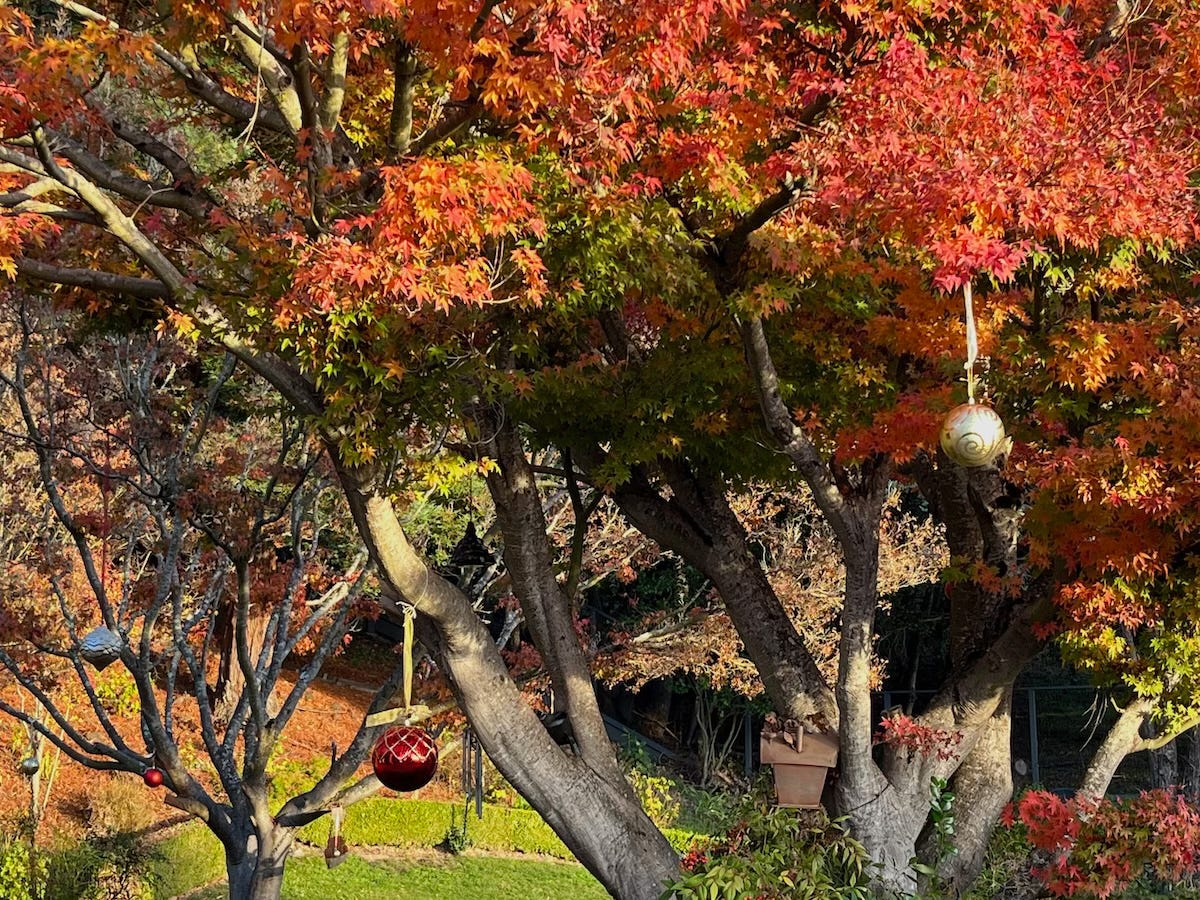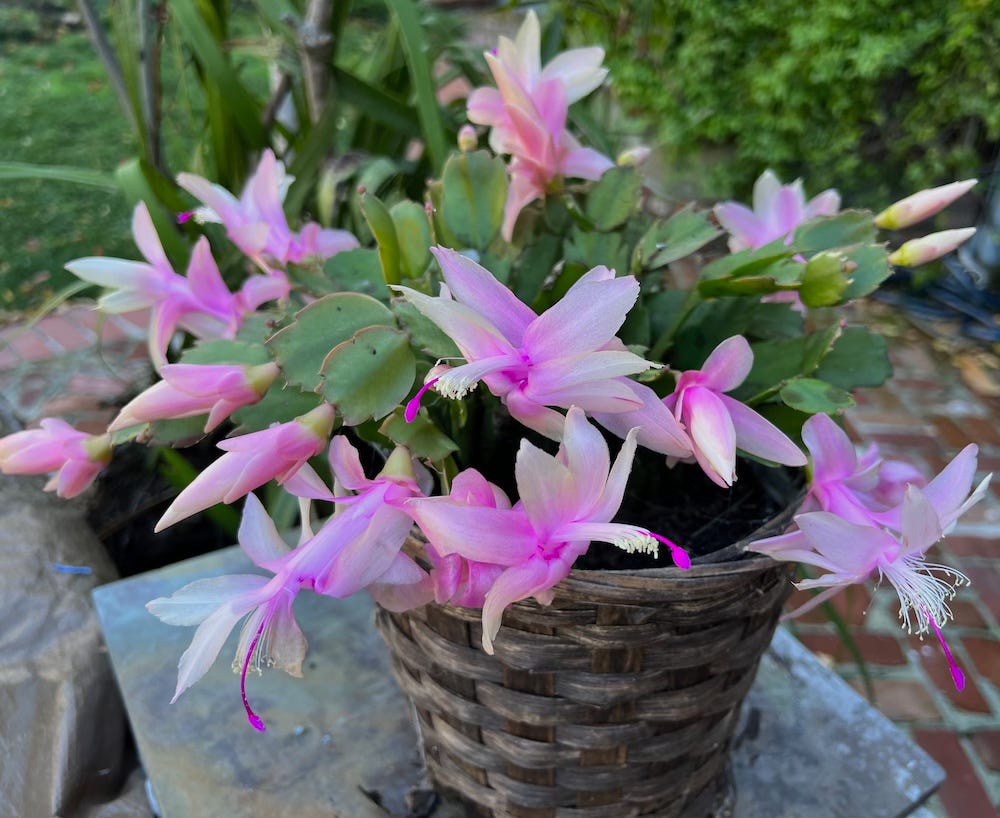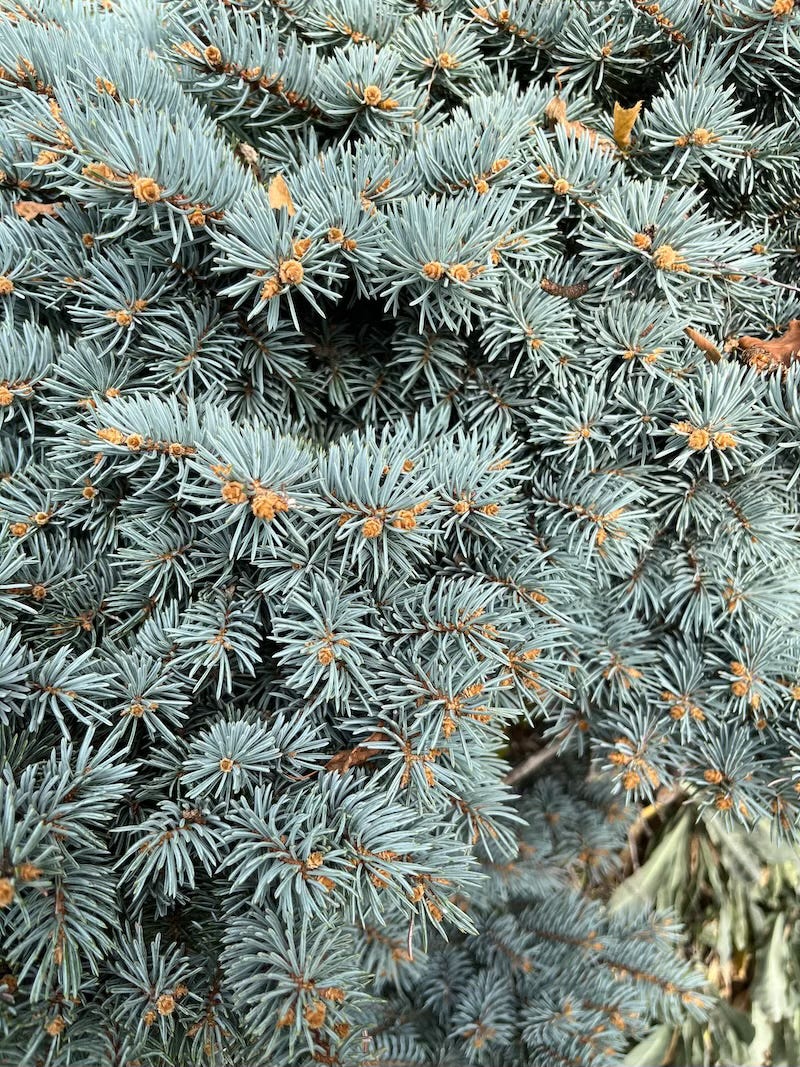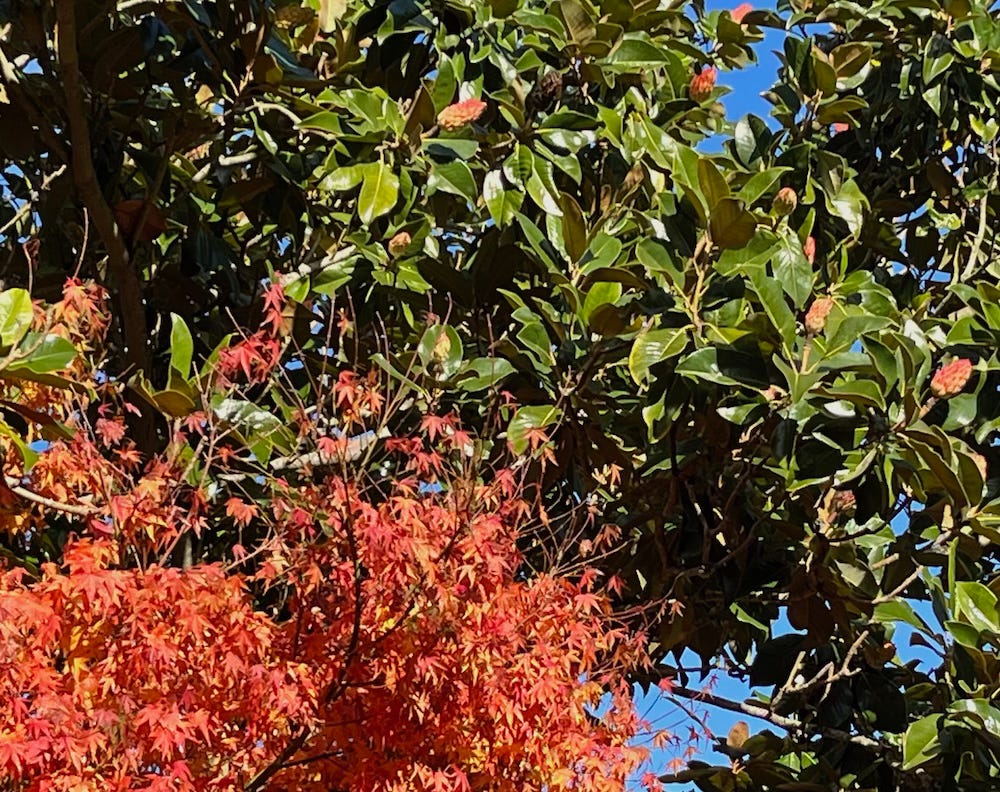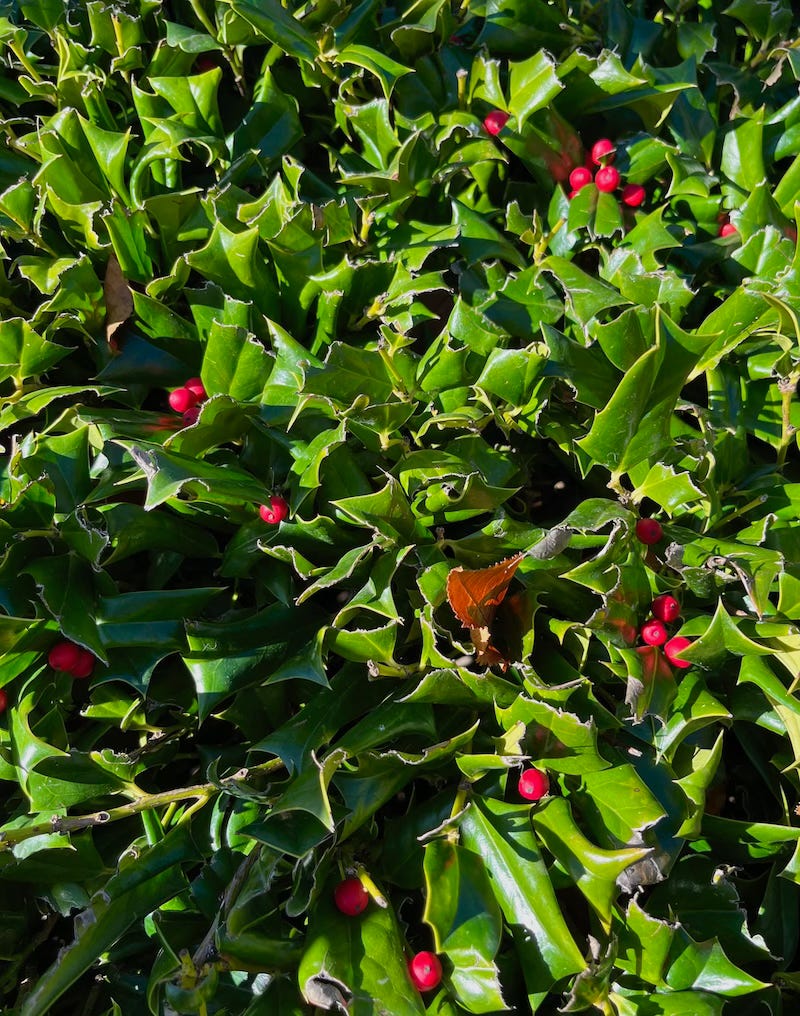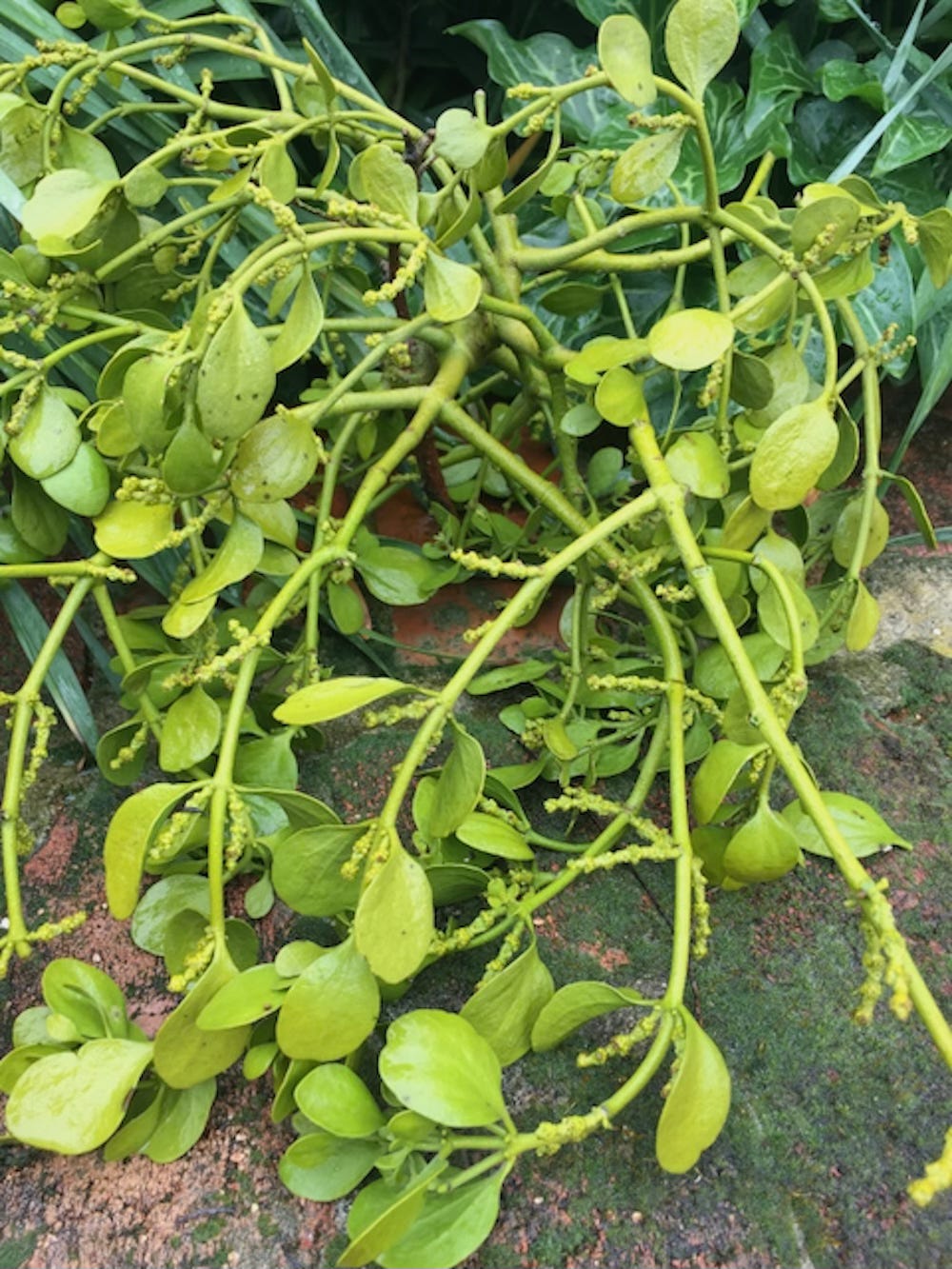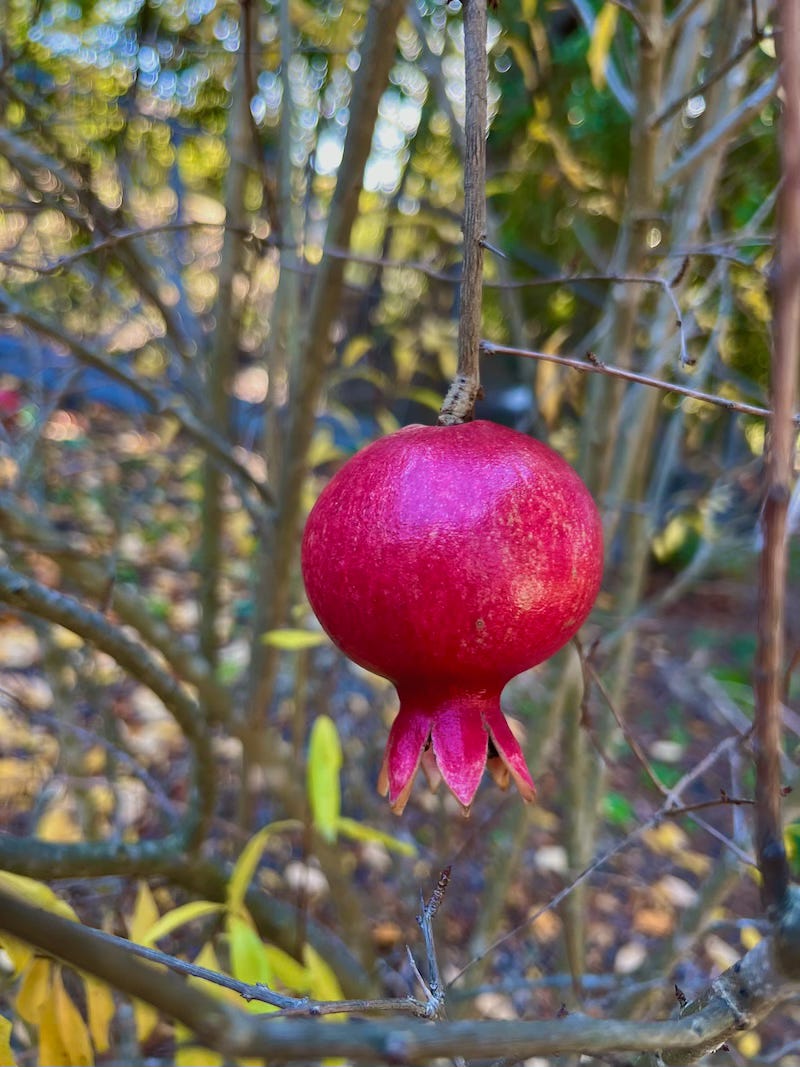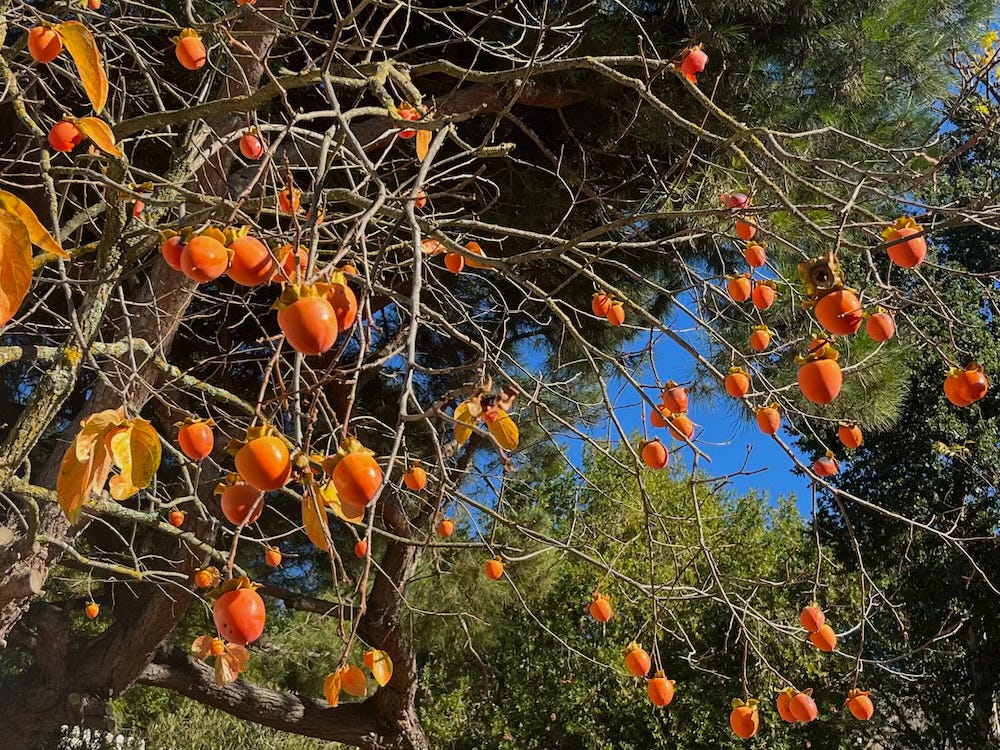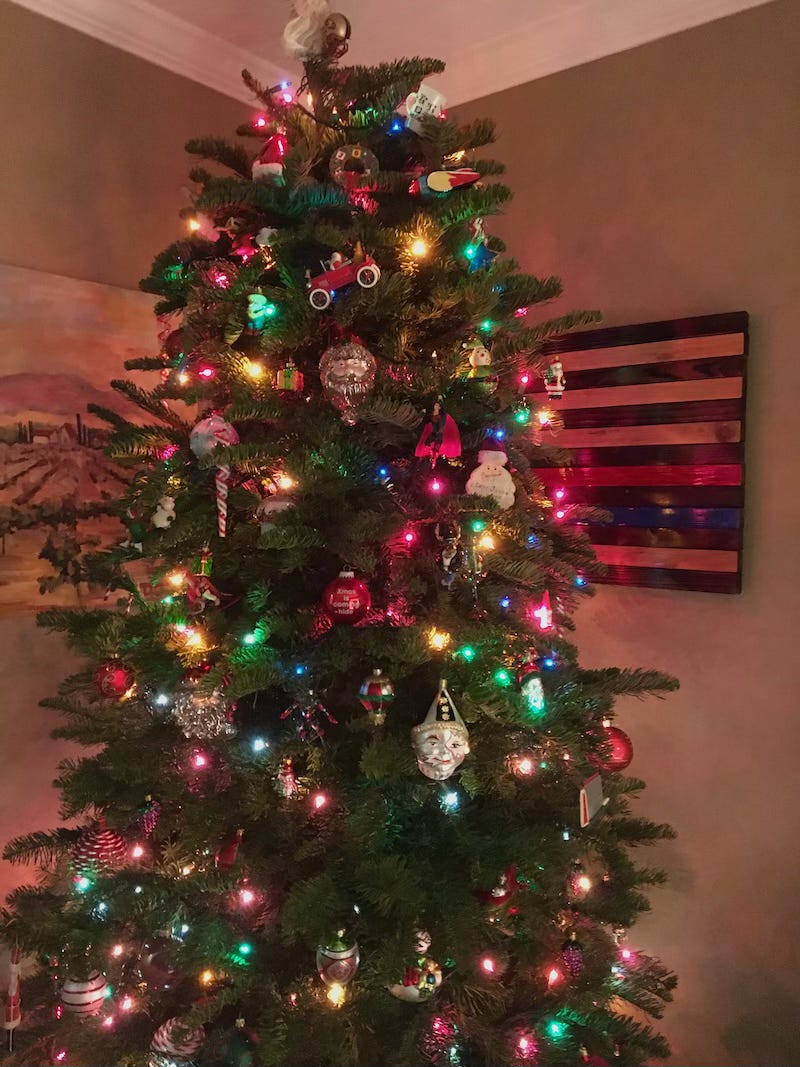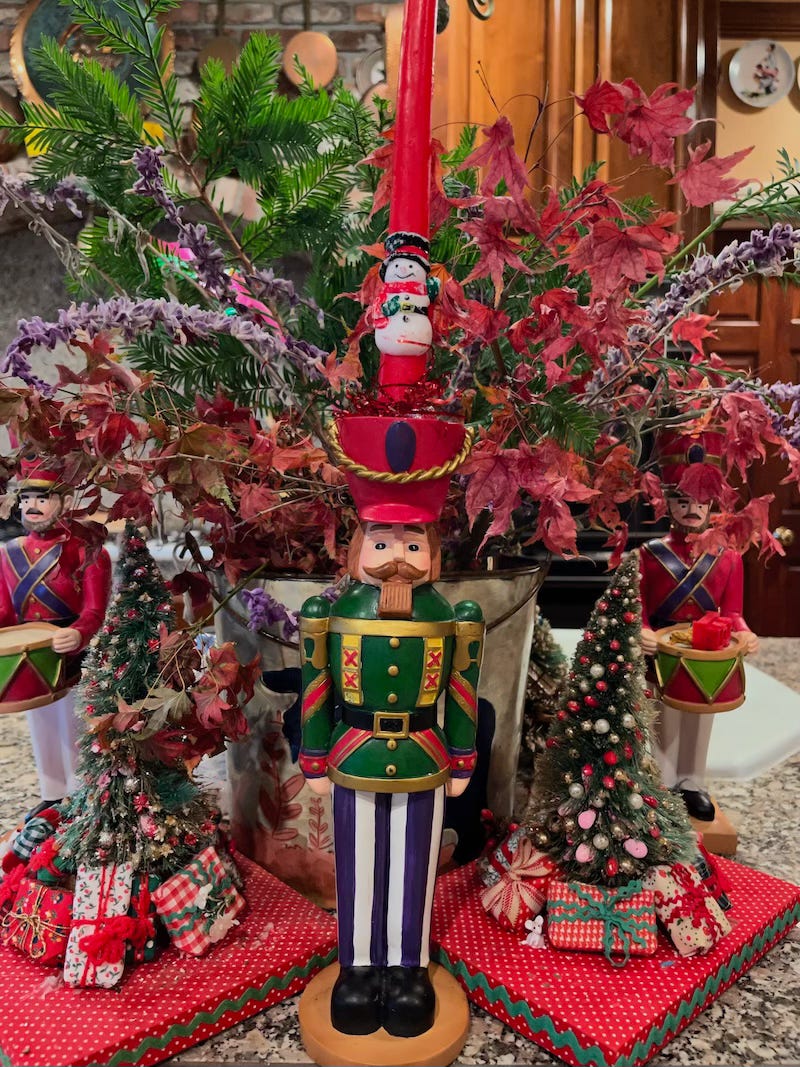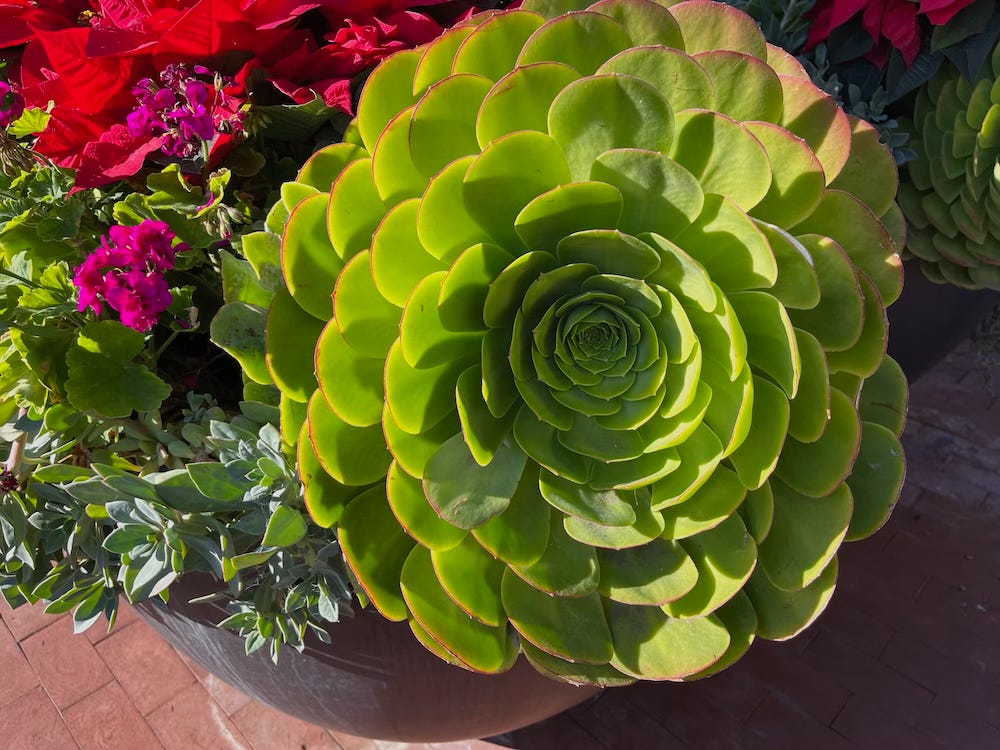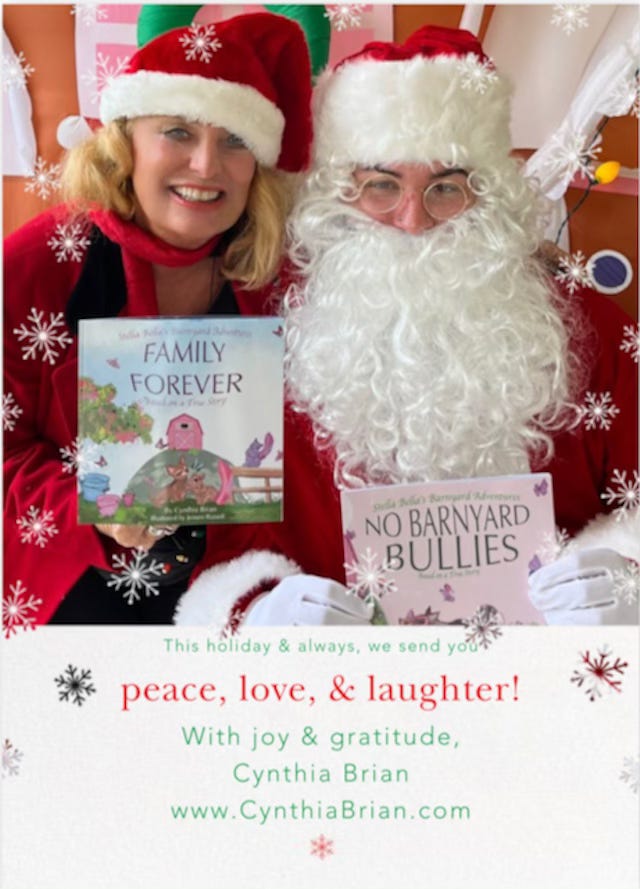“Nature always wears the colors of the spirit.” Ralph Waldo Emerson
It’s beginning to look a lot like Christmas. Everywhere we go, lights are twinkling, Christmas trees are glistening in windows and parks, and gigantic shiny balls are hanging on front yard trees.
Holiday cheer permeates the air as we hum carols and children pine for the jolly white- bearded man in the red suit to land his flying reindeer on their rooftop soon.
The most miraculous part of this festive season is how the landscape lights up with lots of colorful berries, bushes, and cones that we can use to decorate naturally. For the first time in years, my Christmas cactus is blooming in December! In the past, it bloomed at very odd times. The cascading stems and beautiful blooms create cheerful table displays. The vibrant tubular flowers arrive in shades of red, pink, and white. I’m thrilled that my pink Christmas cactus finally is on schedule.
Pine, fir, redwood, spruce, and other conifers retain their needles throughout winter. I use this time of year to do my pruning so that the cut boughs may be added to my mantels, counters, and front porch as wreaths and garlands. A big bonus is that these evergreens add that nostalgic Christmas aroma throughout the house
I also collect pinecones and magnolia cones to incorporate into my displays. The red seeds of the magnolia cones add a touch of elegance to holiday decorations. All the cones can be left natural for a rustic and sophisticated look, or they can be spray painted to match any style.
Pyracantha, cotoneaster, holly, and Chinese pistache berries are then plucked from the bushes and trees to be tucked into the branches as pops of color. Pyracantha berries are orangey-red, cotoneaster berries are a brilliant red, and Chinese pistache berries boast a deep pink to crimson hue with shades of blue.
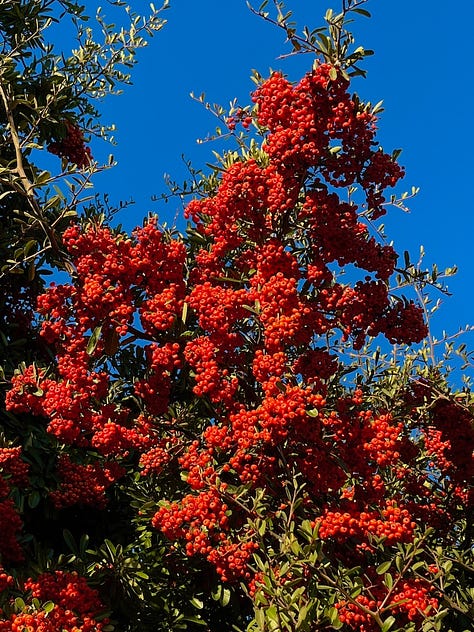
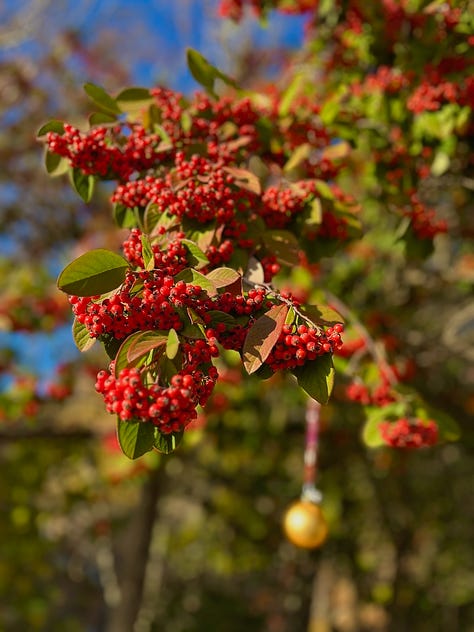
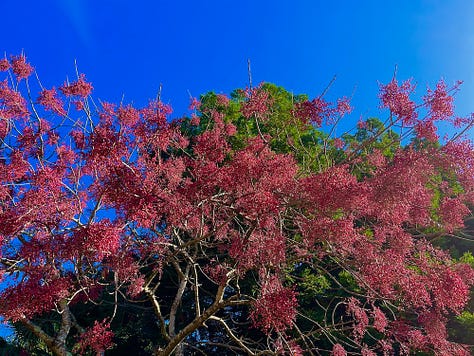
Holly is a classic Christmas plant renowned for its sharp, pointed, glossy green leaves and vibrant red berries. Adorn with shimmering lights and the yuletide symphony begins!
What about mistletoe, you ask? Doesn’t everyone want to kiss under the mistletoe? Mistletoe is a parasitic plant with green leaves and white berries that are poisonous to humans and some animals. Globally, there are 1300 species spread by the sticky seed from the berry either attaching to a bird or other mammal or consumed by them. The Anglo-Saxons witnessed that mistletoe grew where birds left their droppings. In Anglo-Saxon, “mistel” means “dung” and “tan” means “twig”, thus the name mistletoe means “dung-on-a-twig.” Not as romantic as most of us thought! For several years baskets of mistletoe flourished on my beautiful cottonwood tree until these “witches’ brooms” killed my host tree and it had to be removed. From that day forward I kissed the mistletoe goodbye!
Pomegranates and persimmons offer a departure from traditional holiday decorating, infusing a touch of nature beauty and symbolism into arrangements. The deep red color of pomegranates is associated with the merry spirit of Christmas. In many cultures, pomegranates symbolize prosperity, fertility, and abundance. The distinctive round shape and shiny crown resemble a fancy ornament, and their jewel-like seeds are delicious and nutritious as edible décor.
The warm orange tones of persimmons may seem more appropriate for Thanksgiving, yet the sweet, chewy texture of Hachiya varieties is the perfect ingredient in a Christmas pudding while the crunchy, apple-like quality of a Fuyu is fabulous in a festive salad. A bowl of persimmons is elegant as a table centerpiece with its symbolism of good luck and joy.
When it comes to Christmas cherished memories, live trees offer the biggest bang of tradition and aesthetics. While artificial trees are practical and cost-effective, the joyous experience of choosing a living tree creates a connection to nature and environmental sustainability. Purchasing a live tree supports agricultural endeavors as Christmas tree farms replant and replace trees that are harvested. These farms contribute to increased green space. Live trees are biodegradable and can be recycled into mulch and compost. Be on the lookout for the days that your tree can be placed curbside for recycling. With a live tree, there is the opportunity to select a tree that fits your preferences of type and fragrance including fir, spruce, pine, cedar, or cypress. You can also purchase a container conifer which can be moved to a patio or balcony after the holidays and redecorated the following year. If you have room in your yard, it can be planted and decorated annually in celebration of Christmas.
Walk around your landscape to discover the yuletide jewels in your garden. Nature always wears the colors of the season and the spirit.
Don’t forget that it is the season of giving so consider a donation to your favorite charity.
May Santa Claus fill your stockings with peace, health, and prosperity. Wishing you a magical Christmas.
Happy Gardening. Happy Growing.
Garden “To-do” advice before the end of December:
1. Fertilize trees, shrubs, ground cover plants.
2. Apply snail bait around plants susceptible to snail and slug damage.
3. Lower the soil pH for better color and overall appearance on acid-loving plants by applying soil sulfur.
4. Shut off irrigation systems.
5. Monitor watering needs during extended dry periods.
6. Start to rest and relax. Winter is sleepy time. Read The Lamorinda Weekly.
For more gardening advice for all seasons, check out Growing with the Goddess Gardener at https://www.CynthiaBrian.com/books. Raised in the vineyards of Napa County, Cynthia Brian is a New York Times best-selling author, actor, radio personality, speaker, media and writing coach as well as the Founder and Executive Director of Be the Star You Are!® 501 c3. Tune into Cynthia’s StarStyle® Radio Broadcast at www.StarStyleRadio.com. Her newest children’s picture book, Family Forever, from the series, Stella Bella’s Barnyard Adventures is available now at https://www.CynthiaBrian.com/online-store. Hire Cynthia for writing projects, garden consults, and inspirational lectures. Cynthia@GoddessGardener.com





